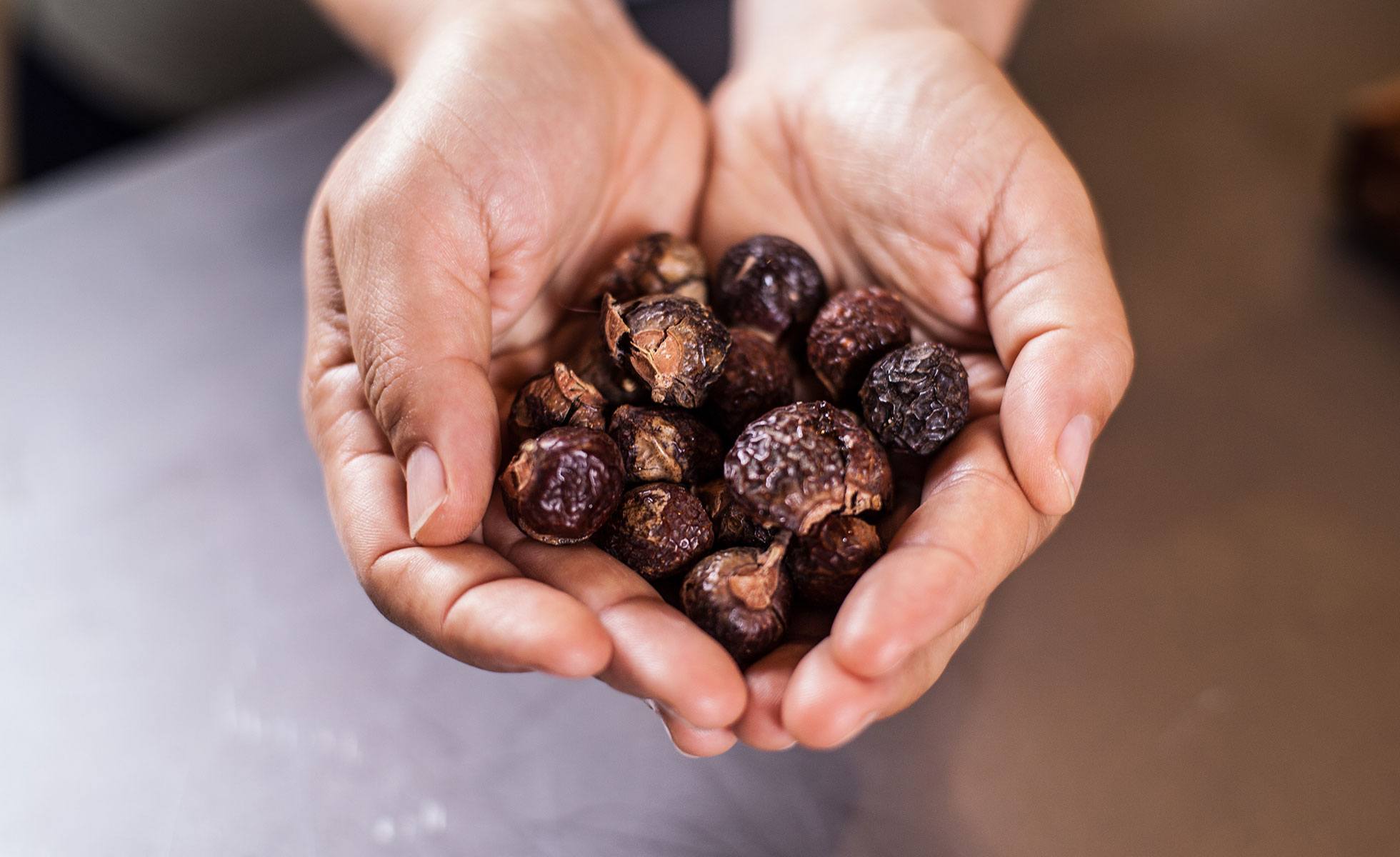
Soap nuts are biodegradable, certified organic, free of scents, plastic and toxics, and many companies ensure local producers (e.g., in India) are paid fair wages. (Photo: Shannon Ruth Dionne)
A DIY dish soap recipe that really works was impossible to find — until now!
Soap nuts are a natural, biodegradable and petroleum-free dish (and laundry) soap alternative. They grow on trees in Nepal and India, but they’re not nuts. They’re actually a fruit. You might also see them sold as “soapberries.” The tree is from the genus Sapindus.
Liquid dish soap
Time to make: less than five minutes
Shelf-life: one to two weeks
- One handful soap nuts (a.k.a. soapberries)
- 1 L (4 cups) tap water
Add ingredients to a glass jar with a tight lid. Shake before each use. When you get bubbles, pour about 125 ml (½ cup) of the solution into your sink. Refill the jar with water. Use the solution until the soap nuts stop making suds or smell bad. Then throw them in the compost and start a new batch.
Personalize this recipe by altering ingredient ratios for desired results. Success will depend on the hardness of your water and dish grime. You can even add the solution to a pump soap dispenser.
Hint: Take soap nuts on your next camping or backpacking trip or use them to wash fruits and veggies!
How do soap nuts work?
Soap nut shells contain large amounts of natural surfactants called “saponins.” Surfactants lower a liquid’s surface tension and can be used as detergents or foaming agents.
Find soap nuts in health food stores, organic grocers or online. Buy them in bulk at zero waste or refill stores.
Soap nuts aren’t local but they have other eco-friendly qualities. They’re biodegradable, certified organic, free of scents, plastic and toxics, and many companies ensure local producers (e.g., in India) are paid fair wages.

Did you know?
Soap nuts also work in the washing machine! Add four or five of them, in a small cloth bag, to a load of dirty laundry. You can reuse that pouch of soap nuts for a few loads.
Is hand washing better than the dishwasher?
Can you wash and rinse a dirty plate with a cup of water?
Researchers at Germany’s University of Bonn found that dishwashers use half the energy, one-sixth of the water and less soap than handwashing. The most careful hand washers could not beat today’s dishwashers! The study also rated the cleanliness level. The dishwasher won.
Dishwashers aren’t without their footprint:
- Choose an ENERGY STAR–qualified dishwasher. Compared to an older model, you’ll cut your utility bills by more than $40 per year. (Appliance sales staff may boast that you can save more than 230 hours of time over a year — almost 10 days! — although handwashing dishes can be therapeutic if you value that as quality family or “me” time.)
- Run your machine full, on the “light” cycle and turn off the “heated drying” option.
- Choose an eco-friendly dishwasher detergent. Use these shopping tips.
- Scrape food into the compost instead of wasting water rinsing.
- Repair a dishwasher before replacing it. Call your municipal depot when it’s time to recycle “white goods.” They’re often banned from landfills.



